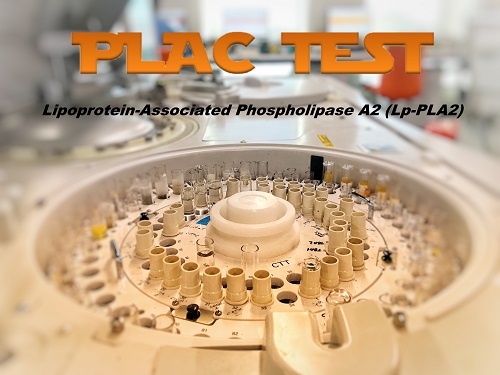Turkey's

Reference Laboratory
Services
Menu
Drug Levels
Microbiology
Clinical Biochemistry
Congenital Metabolic Disorders
Haematology Laboratory
Prenatal Screening Tests
Molecular Microbiology
Allergies
Transfusion Centers
LabBlog!

27 Ekm.22
Mevsimsel grip hastalığının etkenlerinden olan Influenza A ve B, Koronavirüs hastalığının etkeni SARS-CoV-2 virüsü, Solunum sinsityal virüsü enfeksiyonu etkeni RSV, Adenoviral solunum yolu enfeksiyonları etkeni olan adenovirüslerin hızlı tanısını sağlayan bir antijen testidir.

18 Tem.22
İnsanlarda ilk defa 1970 yılında Kongo Demokratik Cumhuriyeti’nde tespit edilmiştir. Sonrasında Orta ve Batı Afrika’daki ülkelerde görülen bu hastalığın sıklığı tam olarak bilinmemekle birlikte Kongo Demokratik Cumhuriyeti’nde 2005’e kadar yıllık 1000’e yakın olgu bildirilmiştir. Hastalık dönem dönem Afrika kıtasından enfekte hayvanlar ve insanlar aracılığıyla diğer kıtalara yayılmakta ve buralarda küçük küçük salgınlar yapmaktadır.

14 Ock.22
Genetik bir miras olarak ebeveynlerimizden aldığımız DNA’mızda bizlere ait bireysel özellikleri içeren tüm bilgiler bulunmaktadır. Bu bilgiler kan grubu, boy, kilo gibi bireysel özelliklerimizden, diyabet, kanser, kardiyovasküler hastalıklar gibi yüzlerce farklı duruma yatkınlık yada direnci belirleyen özelliklerle ilişkilidir. DNA’mızdaki bu bilgilerin çevresel faktörlerle etkileşmesi sonucu kişisel özelliklerimiz ve hastalıklar ortaya çıkabilmektedir.

22 Ara.21
PLAC TEST (Lp- PLA2 Aktivitesi) Kalp Hastalığı Riskinizi Biliyor musunuz ?
PLAC testi; kanda Lp-PLA2 enzim aktivitesini ölçen ve koroner kalp hastalığı riskini tahmin etmek için kullanılan bir belirteçtir.
Acıbadem Labmed Haematology Laboratory and its up to date technological infrastructure, posseses a wide testing panel for diagnosis primarily in the fields of haemostasis, thrombosis and coagulopathy as well as in leukemia, lymphoma and other haematopoietic immunologic disorders. Using the most advanced automatized systems in diagnosis and monitoring of malignant haematologic diseases, the laboratory offers a wide array of testing panels as well as providing consultation services in haematological diseases.Haematology Laboratory
Acıbadem Labmed Haematology Department began using flow cytometry techniques for the diagnosis and typing of leukemia and lymphoma in 2005. In later years, following multi-parametric studies with monoclonal antibody combinations which would best establish cell characterization, immunophenotyping was optimised along with a rapid increase in the number of monoclonal anti-bodies which could be used. With the finding of many monoclonal antibodies and as a result of flow cytometers working both rapidly and effectively with new programs in evaluation; it has become possible to separate B-celled lymphomas into typical B-CLL, Mantle Celled Lymphoma or Follicular Lymphoma as well as to provide AML classification and to evaluate MDS.
These developments have also enabled for morphologically similar leukemia’s / lymphoma’s to be classified under sub category’s. Additionally, flow cytometry analysis of prognosis related antigens such as CD38 and ZAP-70 in B-CLL provides for an optimization of treatment.
Flow cytometry in haematology has found widespread use in acute leukemia’s where there are a large number of tumor cells that are homogenously distributed.With the addition of immunophenotypinto morphological and cytochemical testing, it has been seen in acute leukemia patient groups who were considered to be morphologically in remission, that a small number of blaswhich were previously not identifiable by conventional means could now be identified with the flow cytometer.This has resulted in an approach in whidifferent methods of treatment could boffered to different patients as well as a increase in the opportunities of providing a cure for them. Immunophenotyping, in the meanwhile, has assumed an important role among other contemporary haematologic diagnosis methods such as classical cytogenetics
FISH and molecular genetics (PCR /series analyses). An infrastructure with state of the art technology allows for immunophenotyping, immunofluorescence, special immunohisto-chemical dyes, genetics and molecular testing.
Minimal Residual Disease (MRD) and cytologic evaluations. In addition to urgent and routine haematological evaluations, our laboratory processes a wide sample spectrum in accordance with scientific standards, ranging from haematological tests for peripheral blood to bone marrow and tissue samples to bodily fluids while keeping abreast of developments throughout the world.
Acıbadem Labmed Haematology Laboratory, in addition to implementing daily quality control programmes internally, is a member of international quality control programmes and holds an ISO 15189 accreditation certificate as well as the TÜRKAK certification for competency.
FLOW CYTOMETRY
Our center’s flow cytometry processing is able to simultaneously analyse for 8 antigens on a single cell surface. Following chemotherapy and during monitoring of the disease, the process is able to cull out a single leukemia cell from among 100,000 healthy cells. Flow cytometry has now become an important method for the diagnosis of haematological diseases. When it was first used at the clinic, flow cytometry was seen both as brand new technology and a promise of great hope, today it has become an indispensable diagnostic method in the diagnosis of haematological diseases and is a diagnostic tool which will see increasing use in leukemia immunophenotyping.
It is a fact that developments in immunophenotyping are bound to show an increase over the coming years,especially in the diagnosis of MRD or Minimal Residual Disease.Modern laboratory diagnostic methods for haemato-oncological diseases would not be possible without a combination of different techniques. Initial sample screening and cell differentiation was made with the Sysmex X-Series blood counter. The Sysmex Blood Counter works on the principles of flow cytometry and uses fluorescent dyes with an affinity to nucleic acids, which enables viewing of the full distribution of peripheral blood cells.
Over the past few years, the technology in full blood cell analysers has shown rapid development. Optical and electronic measurements constitute the basic principles used in analyzing for distribution and the counting of blood cells; these have even further been developed together with the introduction of specific lyses and dying methods. The Sysmex XE-2100 automatic haematology analyser uses present-day fluorescent flow cytometry techniques.
With the use of specific fluorescent dyes that have an affinity to nucleic acids, immature cells can also be identified and counted aside from other known mature cell forms. As this principle can be applied to all cells in the peripheral blood sample, a counting of Immature Granulocyte’s (IG) Immature Thrombocytes (IPF, Immature Platelet Fraction) and immature red blood cells (NRBC, Nucleated Red Blood Cells) is also possible.
The diagnosis of immunophenotyping haematolymphoid neoplasms is of great value in the prognosis as well as in the monitoring of treatment. It is especially appropriate for the immunophenotypical analysis of cells obtained from blood, bodily fluids (cerebrospinal fluids, pleural fluids etc.,), bone marrow aspirations and from lymphoid tissues and ideal for smaller samples.
Because it is multi-parametric it also enables for the simultaneous dyeing of a single cell and many antibodies bonded to different flourochromes thereby allowing for important findings to be obtained from a very low number of cells. Flow cytometry can identify cytoplasmic and nucleic antigen signatures as well as determine the number of cellular antigen signatures to a high degree of reliability. An ever growing field for antibody based treatments are the potential “targets for treatment” on malignant cell surfaces as identified by flow cytometry. Flow cytometry allows for a highly reliable(1 / 104-6) evaluation of minimal residual disease, or MRD, and also allows for monitoring of the effectiveness ofprevious treatment and/or progress of the disease. This paper outlines the priciples and applications of flow cytometric immunophenotyping in the diagnosis and analysis of haematological diseases.Peripheral spread and the evaluation of bodily fluidsLaboratory evaluation of coagulopathy and hypercoagulopathy Identification of abnormal haemoglobins and thalassemias. Immunophenotypical evaluation of bone marrow and blood samples. Evaluation of thrombocyte function tests Angioneurotic oedema.
ADAMTS13 in distinguishing between congenital and hereditary
TTPAFA Syndrome
Evaluation of thrombose tests
vWF Ag panel


